Marvels of the Panama Canal at Miraflores Locks
Contemplating the engineering marvels and complicated history of the Panama Canal while watching a cargo ship transit the locks at Miraflores
The Panama Canal was on the top of my list of places to see when I visited Panama City. The Canal changed the world, but I didn’t truly appreciate the magnificence of this engineering feat until I watched a cargo ship go through Miraflores Locks. The Miraflores Locks, not far from Panama City, remain the most popular spot to see the Panama Canal outside of sailing through it.
The Canal provides a waterway through the Isthmus of Panama, connecting the Pacific and Atlantic Oceans. It weaves its way for 77 kilometres between the Caribbean and the Pacific. Locks at each end lift ships up to Gatún Lake, a 425 square man-made lake which provides 33 kilometres of the canal route. It takes eight to ten hours for a ship to transit through the Canal.
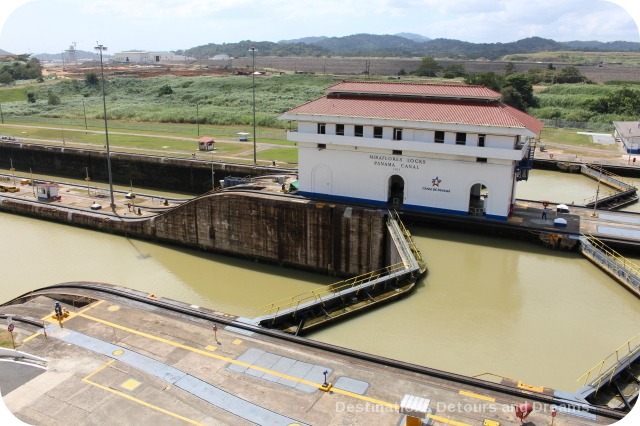
Miraflores Locks are at the Pacific entrance to the waterway. The two-stage locks raise or lower vessels between sea-level and the artificial Lagos Miraflores. At mid-tide, the difference is 16.5 metres. Three kilometres beyond the Miraflores Locks are the Pedro Miguel Locks, closed to the public. Beyond that, the canal narrows into the Gaillard Cut, formerly known as the Culebra Cut, where most of the excavation for the canal occurred. The Gaillard Cut connects to the Chagres River, a natural waterway enhanced by the Gatún Dam, and into Lake Gatún. Three-stage locks at Gatún Lake raise or lower vessels 26.5 metres.
Panama Canal lock chambers were built in pairs, two lanes running side by side and sharing a centre wall. Mitered gates at each end of the chamber swing open and closed. The highest and heaviest gates are at the Miraflores Locks to deal with extreme variation in the Pacific tides. The walls of the chamber are made of concrete. Concrete had seldom been used as a building material before the construction of the Canal.
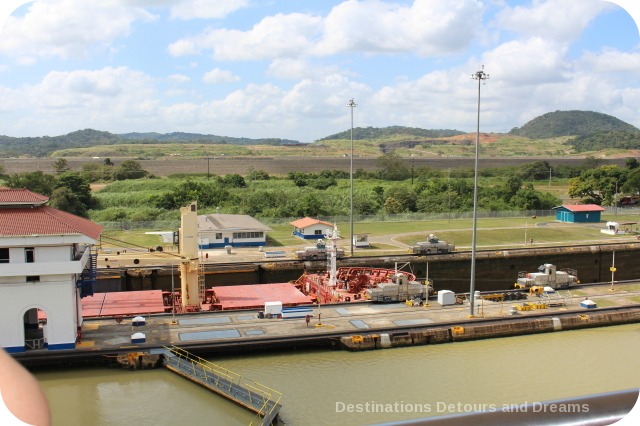
Ships are pulled into the chamber by electric locomotives, known as “Panama Canal mules”. Tugboats also assist with the passage through the Canal, especially in the narrow Gaillard Cut. Once the ship is fully in the chamber, the gates are closed. Sliding steel culvert gates open to let water flow in or out of the chamber. There are fourteen culverts in each lock, each of which has five well-like openings to distribute the turbulence of incoming water over the entire area. The ship I watched was making the route from the Pacific to the Caribbean Sea and Atlantic Ocean. The water level needed to be raised to allow the ship to continue through the Canal. It took about eight minutes for the water to reach the appropriate level.
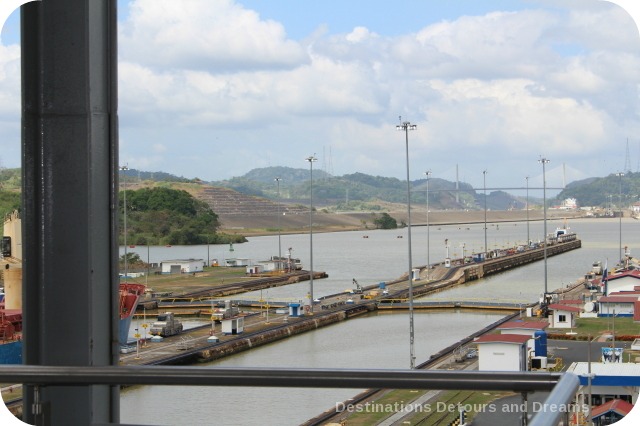
When the water level reaches the appropriate level, the gates at the other end of the chamber are opened and the ship is pulled through, The entire process is controlled electronically from a central control panel. Falling water at Gatún Lake generates the electrical power.
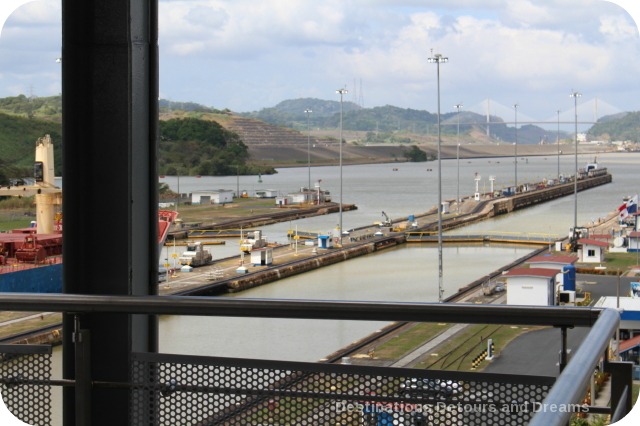
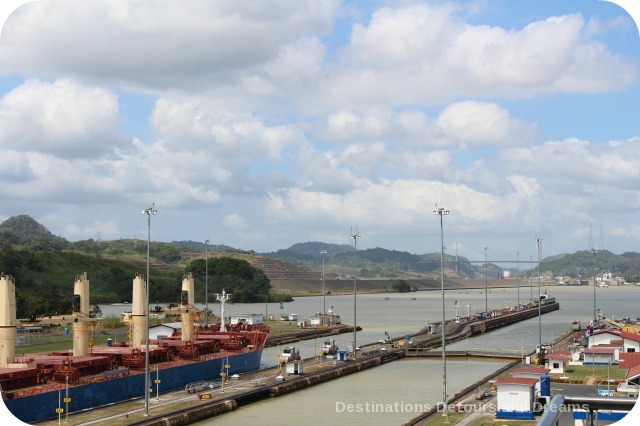
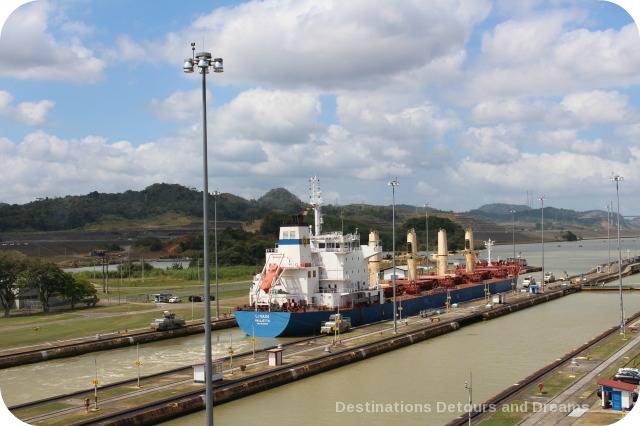
The Panama Canal opened in August 1914 with very little fanfare, due to the outbreak of World War I. Traffic remained light until after the war, but steadily increased after the war. Instead of sailing around South America to get from the Atlantic to the Pacific or vice versa, a trip which could be dangerous because of winds, large waves, strong currents, and icebergs around Cape Horn, the Canal offered a shortened, safer trip, Even with toll charges, there were significant financial benefits to the using the Panama Canal route. The impact was felt around the world, even as far away as my home city of Winnipeg, Manitoba, Canada, where the Canal was one of the factors in the decline of the city’s importance as a railway hub for shipping goods between the eastern and western parts of the country. Today, 13,000 to 15,000 ships transit the Canal in a year.
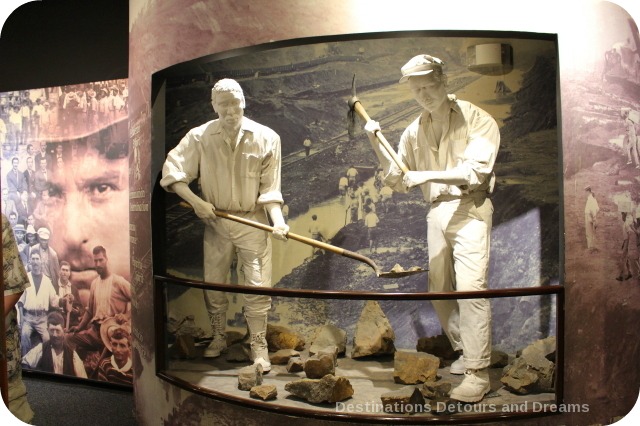
A museum at Miraflores Locks contains information about the Canal. The main floor focuses on the history of building the Canal. Although there are some interesting displays, including blasting noises in front of photos of dynamite activity in the Guillard Cut, the museum provides only a cursory history, focusing mainly on the engineering aspects. There is so much more to the Canal story – political lobbying and manipulation, revolution, and human stories of determination, struggle, and fatality. Thousands of people came to Panama to work on the Canal, during both French and the U.S. construction, and their stories are an important part of the history. For a more in-depth look at this side of Canal history, I suggest you visit the Panama Canal Museum in Casco Viejo, the old part of Panama City.
Serious investigation into a canal began in the 1870s with two possible points under consideration – Lake Nicaragua and the Isthmus of Panama, which was then part of Columbia. In 1881 France began work on a canal at Panama, headed by Ferdinand de Lesseps, the man in charge of the building of the Suez Canal. At the time a sea level canal without locks was envisioned. This would have required significant more excavation. The work was hard and conditions tough. Many workers died of yellow fever, malaria, and other diseases. Additional funds were required several times throughout the project. By 1889, no further funds were available and the company in charge went bankrupt. Three years later scandal broke out in France, with a number of people charged with misuse of funds, deceiving the public, and bribing government officials.
The U.S. government took up the challenge of a canal route, initially favouring Lake Nicaragua but changed focus to Panama after intense lobbying by a former acting director of the French company. The Columbian Senate refused to ratify a treaty allowing the U.S. to build the Canal. President Theodore Roosevelt gave unofficial backing to Panama secessionists and on November 3, 1903 the Republic of Panama was declared. A new treaty was negotiated giving the U.S. power and authority over the Canal Zone in perpetuity.
A period of organization and clean-up began before serious construction work started. A program was established which eliminated yellow fever within eighteen months and brought malaria under control. During the French period, a system of different payrolls was adopted from the Panama Railroad. The Americans also implemented a two-tiered payroll system, which became known as the Gold and Silver Roll. White skilled and semi-skilled workers were paid in gold-backed American dollars at a much higher pay scale than in the U.S. The pay included housing, health, and entertainment benefits. Unskilled workers, the great majority from the West Indies, were paid in local silver-backed currency at lower rates. This led to a system of segregation.
If you are interested in reading more about the history and stories of the building of the Canal, I recommend The Path Between the Seas by David McCullough. It is a long and well-researched book. It is scholarly at times, but more often reads like a political thriller. The story is very compelling.
In 1964, a three day riot began when university students attempted to raise a Panamanian flag beside the U.S. flag in the Canal Zone. Twenty-one Panamanians and four U.S. Marines were killed. This event is cited as a significant factor influencing the U.S. 1977 decision to turn control of the Canal over to Panama. The actual transfer occurred December 31, 1999.
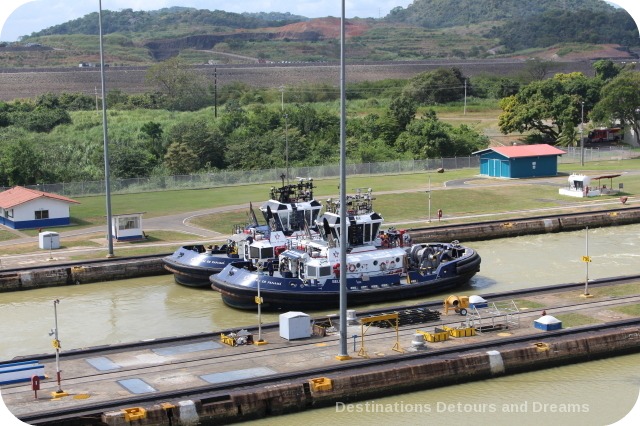
The second floor of the museum contains information on insects and plant and marine life in the Canal Zone. The Museum also contains a simulation room where you can feel what it is like to be on a ship transiting the Canal. The speed is faster than an actual crossing. I found myself getting dizzy and had to leave the room.
The top floor of the Museum is about Canal expansion. Ships of today’s size were not envisioned when the Canal was built. The Queen Mary, launched in 1936, was the first ship too large for the locks. In 2007, an expansion program began to create new locks 40% longer and 66% wider. The expanded canal began operation in 2016.
The engineering of the Canal is still impressive a century later. I was fascinated to see the locks in action. Rather than compensate for the cruise I hadn’t taken through the Canal, it increased the desire to do the cruise and experience going through the Canal myself (at a normal, non-dizzying speed).
Visitor Information
Miraflores Locks is about fifteen minutes outside the city of Panama. The Visitor Centre is open every day from 8:00 am to 6:00 pm, but the ticket office closes t 5:00 pm. In addition to the Museum and the observation deck, there is a restaurant, snack bars, and a gift shop. Information about ships transiting the Locks is broadcast on the observation deck in English and in Spanish.
A bus to Miraflores Locks runs from the Albrook bus terminal. We had some difficulty finding exactly where this bus stopped at the terminal. You may need to ask for help as to where to catch the bus. It was not one of the destinations listed on the signs at the various stop areas. When we asked we were directed back and forth a bit until someone finally helped us very specifically and we waited at area D. Alternatively, you could take a taxi. Clarify the fare before making the trip.
It is a good idea to call the Visitor Centre and find out when ships are scheduled to go through the locks. You can then time your visit appropriately. We did not do this and happened to be lucky. A ship was in transit as we arrived. However, if we’d missed that, we would have had a three hour wait until the next ship. Mornings and late afternoon see most of the ship activity.
PIN IT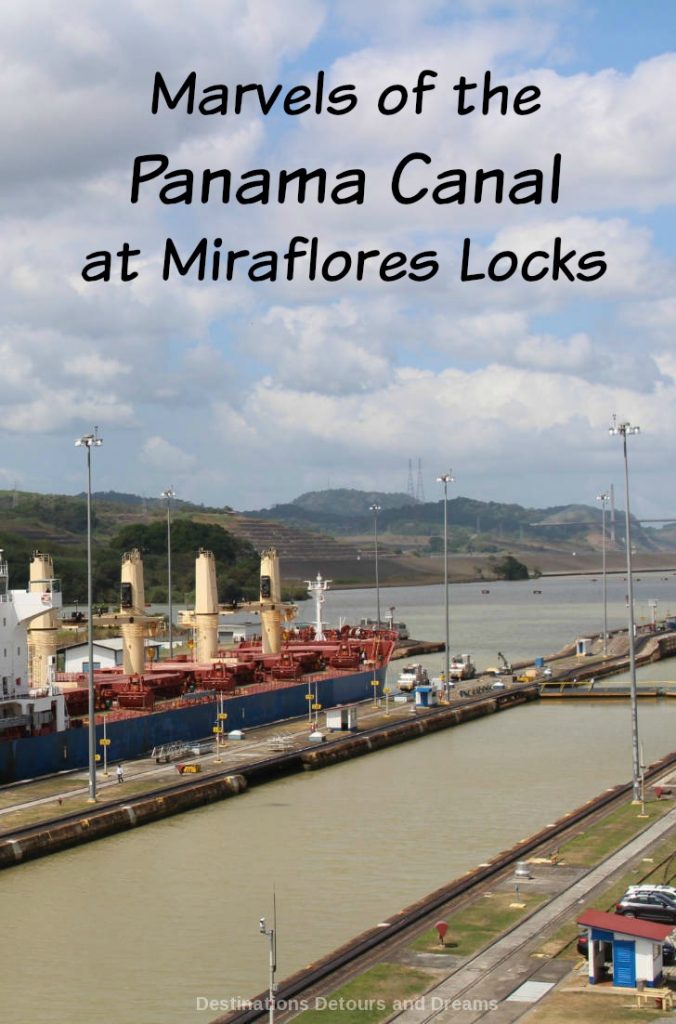
If you enjoyed this post, sign up for Destinations Detours and Dreams monthly e-newsletter. Get behind the scenes information and sneak peeks ahead in addition to a recap of the month’s posts.

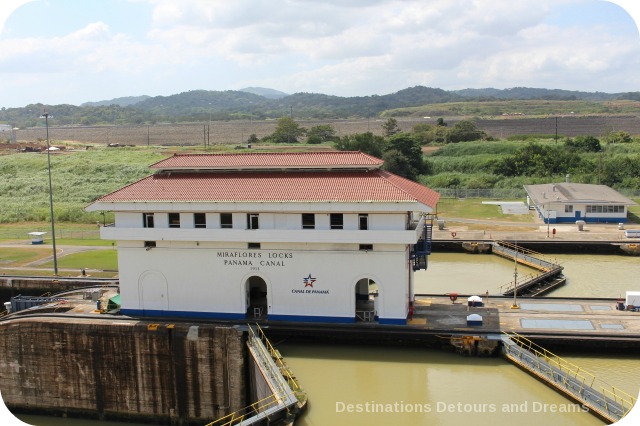
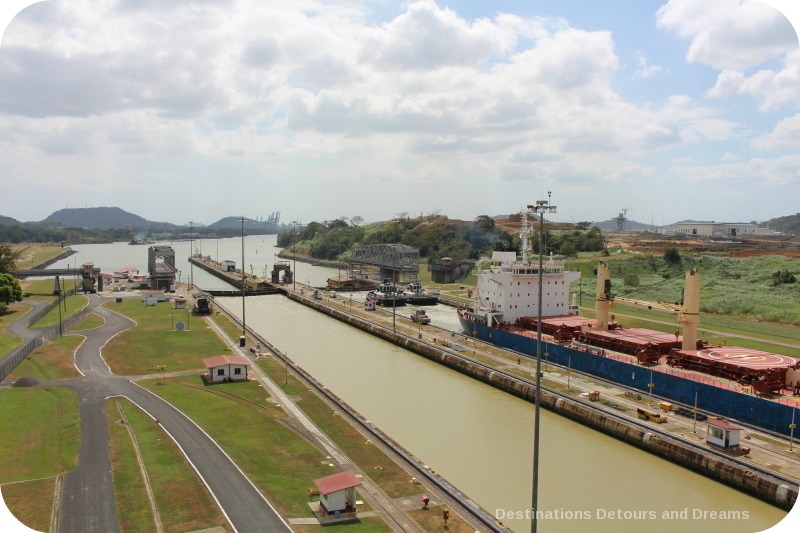
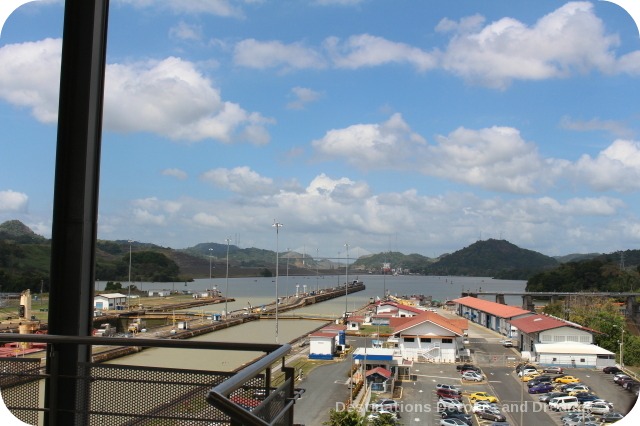
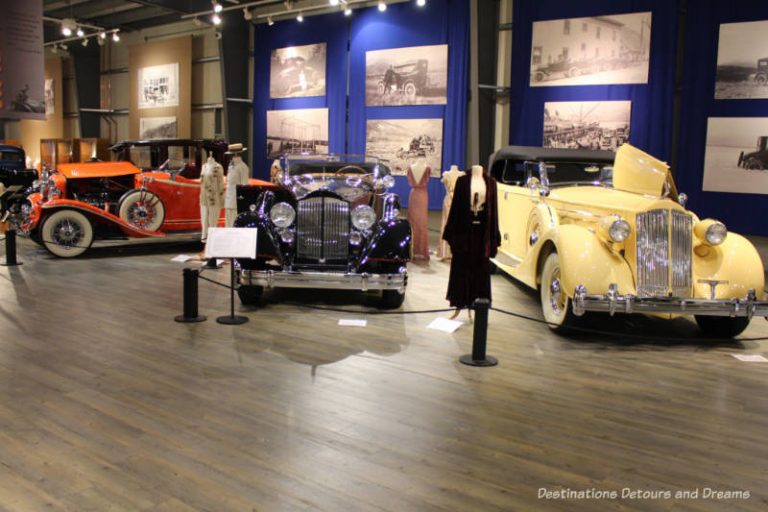
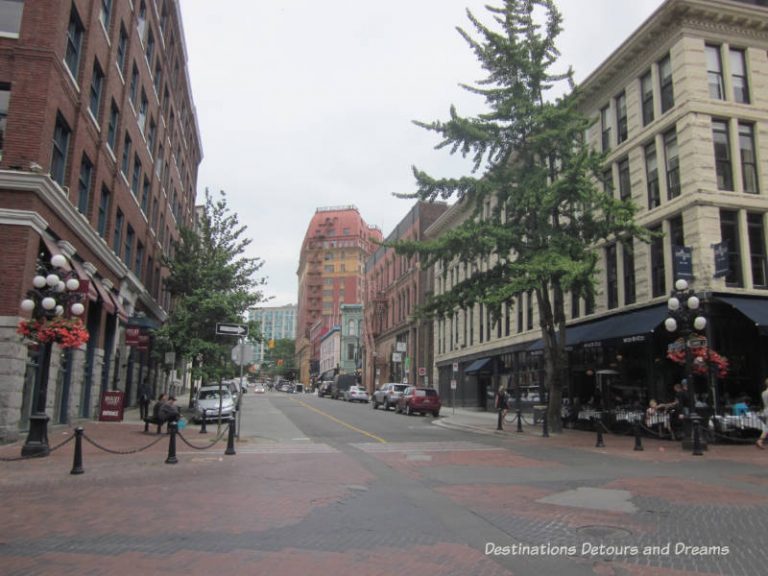
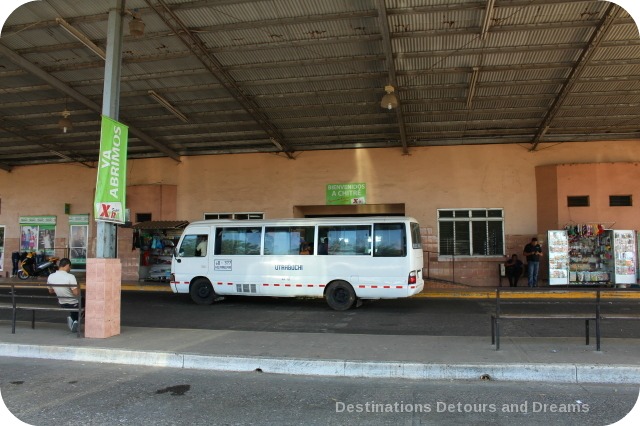
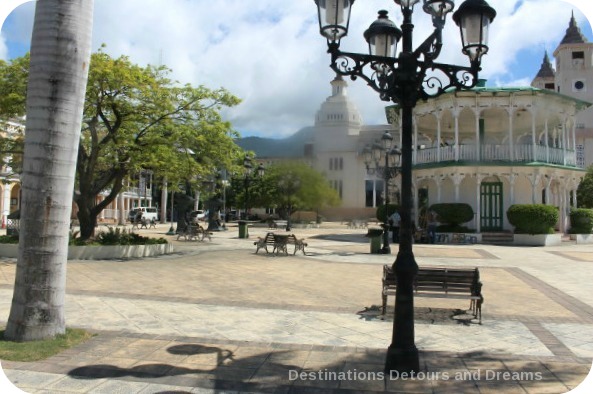
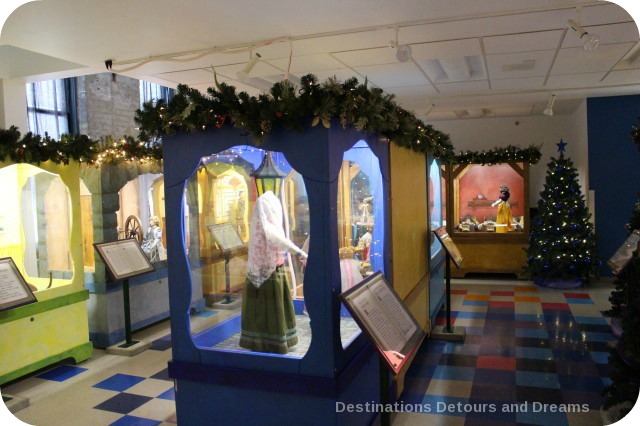
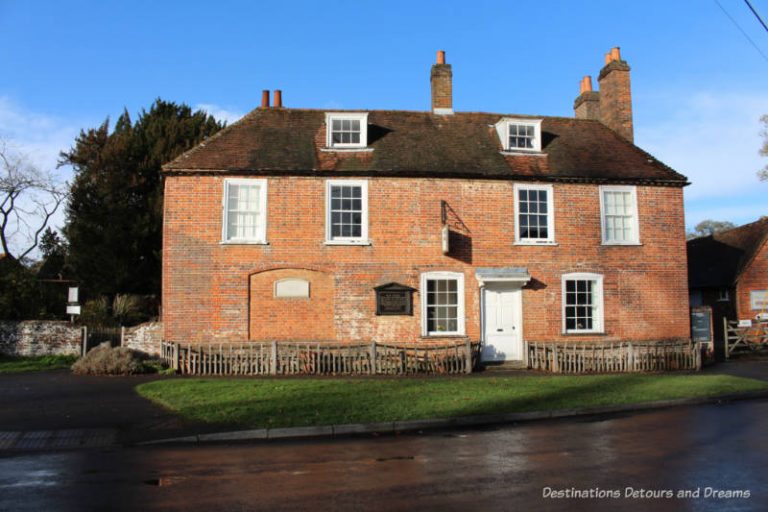
Great background on the canal, Donna. Lots I didn’t know here. We visited when we were in Panama a couple of years ago. It’s a pretty amazing feat of design and construction.
Deb, it is pretty amazing isn’t it? I didn’t really appreciate what a feat it was until I saw it and began to read more about the canal.
We visited the Panama Canal a couple of years ago as it was getting ready to celebrate its 100th anniversary and watched the ships transit through both the Miraflores and Gatun Locks with the same fascination that you describe. It really is amazing to see this engineering marvel in action! We also read David McCullough ‘s book (available as an e-book) and learned how controversial the canal had been at the time as well as the political shenanigans and maneuvering that took place behind the scenes. Loved your background story Donna – well told and it reminded me again of how excited I was to visit this historical icon. Anita
Anita, I didn’t expect to be as fascinated watching the ships transit as I was. It would have been great to get to Gatun Locks too. Were there special events organized around the 100th anniversary?
Everyone I know who has experienced the Panama canal marvels over the wonder of it. But you’ve provided some great background information that I wasn’t aware of! Congratulations on another great trip!
Thanks Jacquie. I started reading about the Canal before my visit and became fascinated with everything about its construction.
I remember studying the building of the canal is school a zillion years ago. This was wonderful to read about it as an adult and understand better about how it functions and more of the history of it.
Rose Mary, I don’t remember studying anything about the Canal in school, but it must have been covered at least briefly in some history class. It’s a fascinating story.
Hi Donna, I remember learning about this in school. It was hard to imagine as a child what a monumental feat this was. It’s amazing what man can accomplish when they put their minds to it. 🙂
Susan, I started reading about the Canal before I visited. What surprised me during my reading and during my visit is how amazing the engineering and the story of the building is even a century later. With technology advancing so quickly this days, I wasn’t sure I would as impressed as I was.
My husband’s cousin (who lives in BC) has a sailboat and after retiring a few years ago, he headed south along the west coast. He crossed to the Caribbean through the Panama Canal. Being in a small sailboat is a whole other experience transiting the canal. From him we found out that there is a website with live cameras on the locks. We were able to see some of his actual crossing that way. That was really cool!
Eva, that is so cool. I never thought about smaller boats going through the Canal. I’m sure it would be a whole other experience. And being able to watch on webcam someone you knew transiting the locks would be great. Neat experience.
What an interesting post about the Panama canal and its history! I lived in Valparaiso, Chile for a while and apparently, prior to the Panama canal, Valparaiso was the major South American shipping port for Latin America. It used to be a very wealthy city. Now, because of the Panama canal, the port at Valparaiso is not used as much, and it is the poorest city in Chile, or at least it was 5 years ago when I lived there.
Michele, I never realized how fascinating the story of the Panama Canal was until recently. We often hear about the ways it changed the world for better, but there were also places hurt by it. I didn’t know about Valparaiso specifically. Thanks for telling me about it. It’s a sad story amid the marvels of the canal.
Wow! I was always fascinated Panama Canal. I thought it would be wider. Great pictures by the way. Was it crowded when you went?
Sabrina, the Canal is wider at the lakes it goes through, but the locks are narrower than I expected too. There were a lot of people on the observation deck when I was there, but it wasn’t overcrowded.
Donna, we have all heard of the Panama Canal. But to be honest this is the first time I have looked at pictures of it. Thank you for giving me images to associate with it. As I’m sure you undestand I have never googled it for images and now I don’t have to.
Catarina, did the locks in my photos look like you imagined? Oddly enough, I didn’t have any idea of what to expect and had formed no images in my head before I saw the locks.
I of course know about the Panama Canal, but I didn’t know much of its history. It makes sense how it wasn’t build for boats of today’s size. Things were much simpler 100 years ago. I used to live on a small island connected to the mainland by a drawbridge. Traffic stopped every half hour to let that bridge open and let ships through because ships today are just so big. I imagine it is that much more complicated when dealing with something like the Panama Canal. I didn’t know there was a museum completely dedicated to its history. Sounds like it would be an interesting visit.
Erica, I imagine the engineers who worked on the canal would be amazed the see the size of ships today. I really enjoyed the Canal Museum in the Casco Viejo part of Panama City.
I would love to wander through that museum Donna. I’m fascinated by history and from what little I’ve read about the Panama Canal I think it would be a fascinating place to see firsthand. Thanks so much for sharing!
Marquita, I found the history of the Panama Canal fascinating. It makes for an interesting read if you are interested,
Wow! Eight to ten hours to cross the canal? I had no idea. In my mind, I guess, ships just sort of sailed on through. What an interesting post. And what an engineering achievement.
Ken, the more I read and learned about the canal the more impressed I was with what an engineering achievement it was.
I feel.like I have stepped back in time. Such an interesting insight into the Panama Canal. Often we overlook landmarks without truly knowing the history of them and the impact they have made.
Phoenicia, the history of landmarks provides for a deeper appreciation of them. I’m glad you found the brief history I provided interesting.
Donna, you do have some wonderful travel experiences, don’t you? Thanks so much for sharing them. I had no idea about the background of the canal, the political maneuverings, the benefits to the world but also the downsize. Of course, like everyone else I’ve heard about it but never thought much of it but it really was an amazing accomplishment. One thing I noticed here and have often wondered about – how can those tiny tugboats pull those huge freighters? Fascinating.
Lenie, in the current locks tugboats guide ships into the locks, but it is locomotive “mules” which pull them through the locks. The locomotives will not be used in the new, wider locks currently being built and the tugboats will pull them through the locks. It would be interesting to go back after the new locks are in operation and see that.
The panama canal, does have a wonderful history, and was a marvel in construction.
It was here that the first prevention for malaria was implemented. Workers were given mesh to put over their cots at night so misquotes would not bite them.
When I was in The Coast Guard, I too was able to see this site. It is impressive to view the magnitude of how large and long it really is.
Thanks for sharing this with us.
William, it is impressive, isn’t it?
Didn’t know that much about the Panama Canal. I would visit if I ever wen to panama.
Jason, Panama Canal tops most people’s list of things to see when in Panama City.
Oh wow, this is pretty amazing Donna. I didn’t know much about the Panama Canal. The history about Panama Canal is wonderful. Your blog is my geography class. Thanks for sharing x
Thanks. I find the history of the canal fascinating.
hi donna; you go such awesome places. i’m still here behind my laptop. 🙂 i studied the panama canal in college, but your report still kept my attention. I was hoping you would mention the expansion. guess they are still doing things the same way. Nothing involving the canal has ever been done on time. I hear that newer larger cruise ships are just as big a part of the reason for the expansion as cargo vessels are. and you do a great job including and tagging photos so i can at least follow along. can’t wait to hear where you go next. take care out there, max